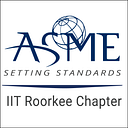New Lithium-Ion Batteries That Work Well in Scorching Heat and Extreme Cold
INTRODUCTION
Engineers at the University of California San Diego have developed a new lithium-ion battery that performs well at extremely high and low temperatures while still packing a lot of energy. This feat was accomplished by developing a versatile, robust electrolyte throughout a wide temperature range and compatible with a high-energy anode and cathode.
The electrolyte is made of a liquid solution of dibutyl ether mixed with a lithium salt. A unique feature of dibutyl ether is that its molecules bind weakly to lithium ions. In other words, the electrolyte molecules can easily let go of lithium ions as the battery runs. This weak molecular interaction improves battery performance at sub-zero temperatures. Dibutyl ether can easily absorb heat because it stays liquid at high temperatures.
WORKING MECHANISM OF LITHIUM-ION BATTERIES
Typically, all lithium-ion batteries work on the same principle, i.e. when the battery is charging, the positive lithium ions are released, which flow through the electrolyte to the negative electrode and stay there. During this process, the battery absorbs and stores energy, and the lithium ions migrate back to the positive electrode during discharge.
The flow of lithium-ions and electrons is accomplished by using a suitable electrolyte. Thus the performance of a lithium-ion battery in an environment depends on the type of electrolyte used.
APPLICATIONS AND ADVANTAGES
Since the lithium-ion battery can function in extreme conditions, this property can be utilized in appliances working in extreme conditions and increasing their battery life. These batteries can be used in UPS, power banks, alarm systems in remote locations, drones, and rovers and can also store solar energy.
A lithium-ion battery has a high energy density. It can last longer between charges while maintaining a high current output. That makes it the perfect battery for most modern needs. As we spend more and more time on our mobile phones, lithium-ion batteries can ensure that we are always on the go and spend minimal time attached to a charging cord.
Not only while being used, but Lithium-ion batteries have a clear advantage when not being used. When kept idle, the rate of self-discharge, a common phenomenon in batteries, is extremely low. In most cases, it is as good as being negligent.
Lithium-ion batteries have a low maintenance cost.
Lithium-ion batteries are much lighter than other rechargeable batteries of the same size.
The unique advantage of the new lithium-ion battery is that it can be used in lithium-sulphur batteries, thus making it essential for next-generation batteries. Since lithium-sulphur has a high energy density but is unstable under extreme conditions, the battery’s life cycle can be raised in extreme conditions by utilising the new electrolyte.
CONCLUSION
There is a huge demand for better, effective batteries in various technology areas. The new lithium-ion batteries can be used in applications with harsh conditions and high power. Also, these batteries are compatible with lithium-sulphur batteries, thus making them essential in next-generation technologies.
It can be used in rovers that function in an extreme environment, thus increasing the working duration of the rover.
Yalmarthy NV Ronnit gupta is the writer of this article. Views expressed, and information provided belong solely to the author.
